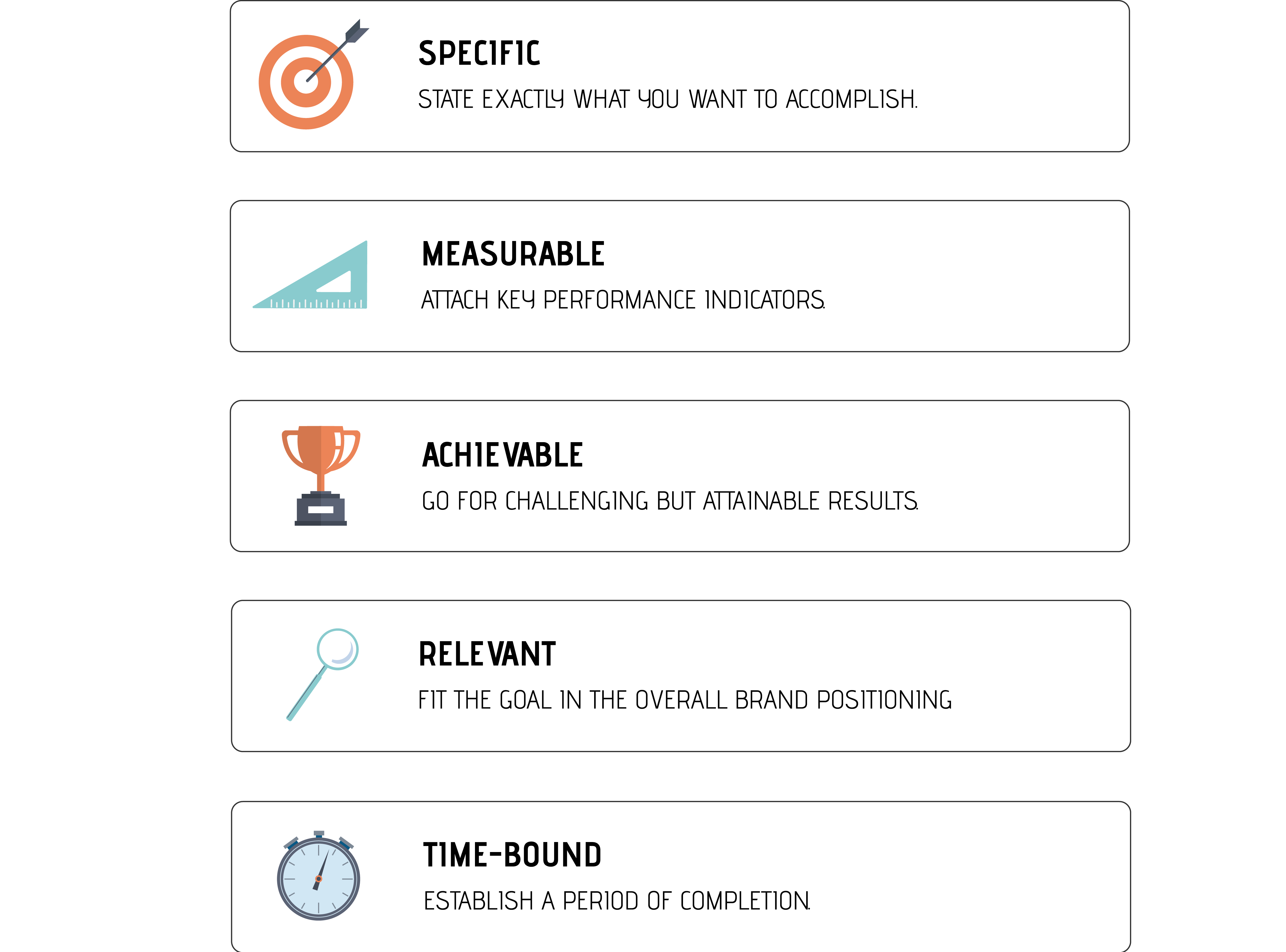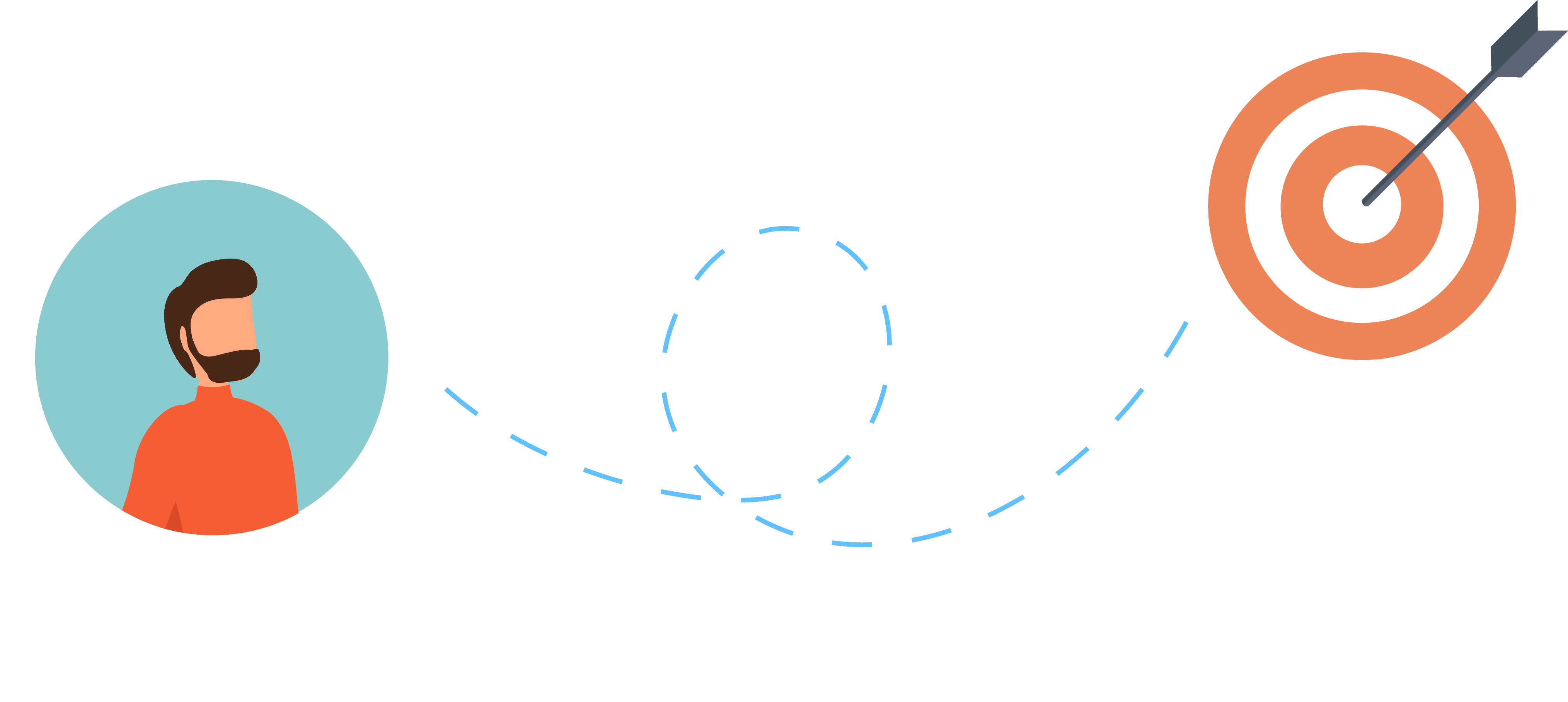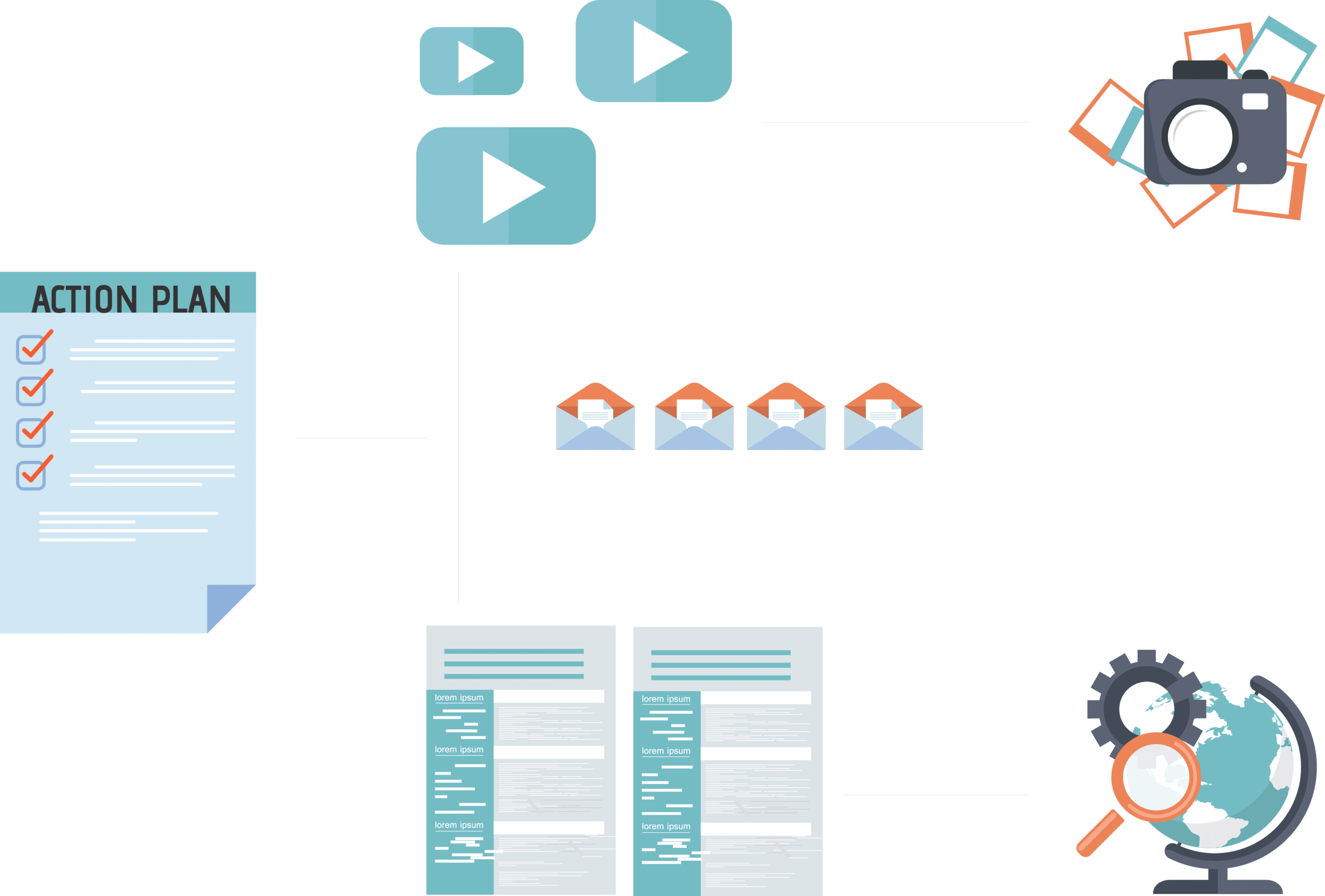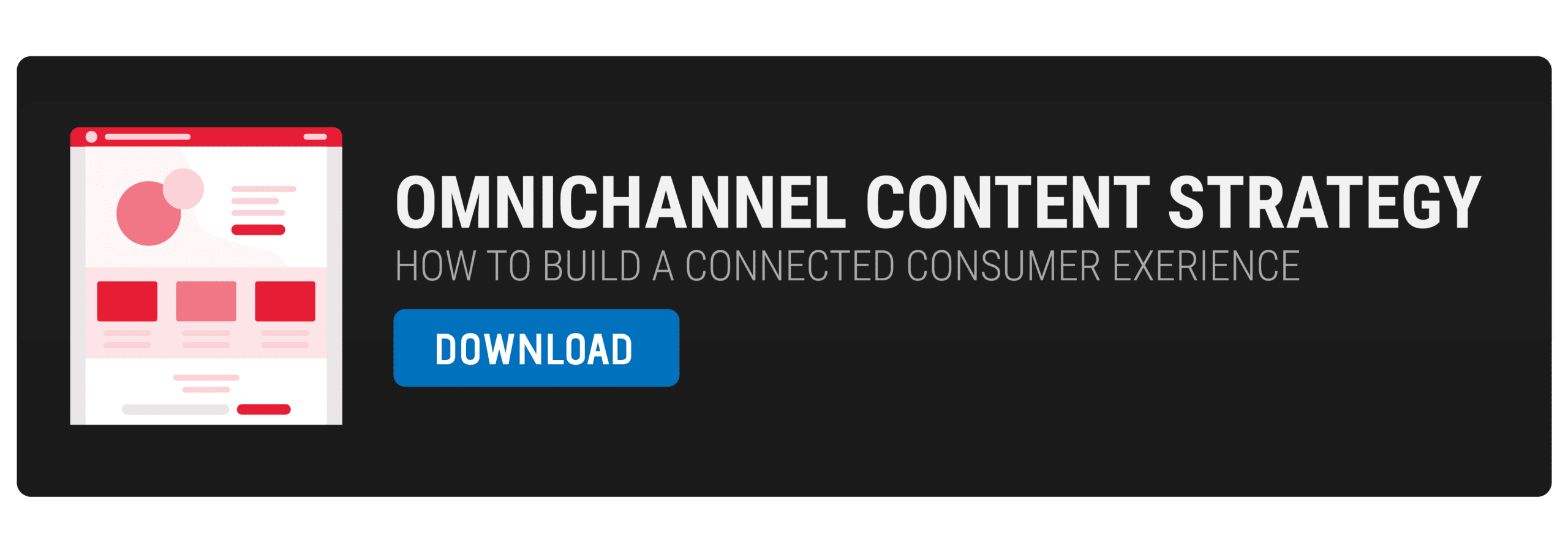How To Create Brand Content For Your Audience
Every brand needs to create content for it’s audience in the era of digital consumption. It doesn’t matter if you’re part of a marketing team, or you’re a one-man band.
81% of brand to consumer marketers agree that their organization is concentrated on creating content that builds loyalty, according to recent research done by the Content Marketing Institute.
Content marketers increased spending on brand content creation more so than other areas of content marketing in the last 12 months.
It’s clear that leading brands are investing more time and money than ever, to optimize the experience for their customers.
So, the question is, how can you effectively create content that helps both you and your audience reach your respective goals?
How can you create effective brand content?
A simple way to get in touch with your audience and create content that is valuable to them is to find a way and connect your brand content with their personal needs and goals.
I describe the concept of alignment as an exchange of value between a brand and its consumers, which ultimately leads to shared gains.

To align your content marketing goals with your audience, it is important to first define the expectations from both sides, and then follow up with a map of the feasible paths to reach the target.
1. Define your content goals
To define the goals, let’s separate a branding strategy from content marketing strategy for a moment. While your branding strategy should consist of brand purpose, visual identity, messaging, that is not a content marketing strategy.
The content marketing strategy should leverage those brand identity attributes and connect them to a set of goals, that will be reached by producing tailored content.
Goal setting is essential because it will help you stay consistent with the purpose of the content that you’re creating. It will also help you measure the results that your strategy shows over time.
What are SMART Content Marketing Goals?
For your brand, that can look many different ways. Content marketing goals can range from increasing brand awareness, creating for a niche audience, to content supporting the launch of a new product or service.
A popular practice for setting goals is by using the SMART framework, which means that each goal should be specific, measurable, attainable, relevant, and time-bound.

SMART Goals Example
Don’t be vague with the set-up, create specific goals that will be easy to track and measure as time goes by. For example, “Increase Instagram Followers” is a very indefinite setup, and there is no way that you can track the content performance over time.
Instead, a well-defined goal would be something in the lines of “Reach 10,000 Followers on Instagram, by the end of December”.
The goals and objectives you set out to do can be small or big, but of course, they need to be realistic and accomplishable, depending on the number of people on your team, available budget, time constraints and so on.
2. Connect your brand goals to audience needs
While your business goals are a good indicator of what type of content you should produce, the consumer input matters greatly as well.
To relate your goal to those of your customers, start by looking at the target person and your brand purpose side by side. How does your brand fit into their lifestyle?
Walk a mile in their shoes. Think about your content as a solution to a problem that your target person has, and how you can present it to them. For example, let’s say that your brand goal is to receive pre-orders on an upcoming HTML programming course.
Simply put, the corresponding goal of the target customer would be to find a trustworthy platform where they can learn programming.
That means that your brand has the opportunity to find common ground by providing the right content that will fill in the blank and offer the audience a way to reach their goal.

Create a target audience profiles
It is important to have in-depth target audience profiles on the people you’re trying to reach with your brand.
Audience personas are curated profiles that describe large groups of your target customers that share similar demographics and lifestyles.
If you do not have your target audience profiles documented yet, I highly recommend you devote some time to that process before you start working on your content strategy.
That way, it will be much easier to find a way to relate your brand goals to your audiences’ goals.
3. Map the audience’s journey
Things move quickly in the marketing world, as new trends and data constantly washout some of the previously practiced techniques or concepts.
One of them is the concept of funnels that will lead your audience from the discovery of your brand, all the way to a conversion.
Newer research suggests that people don’t move through funnels sequentially, but instead, they interact with brands on multiple occasions, depending on what stage of consumption process they are in.
You need to identify the stages relevant to your strategic approach.
Your strategy can have very specific stages where you want to serve content to your audience depending on your goals, but just as a guide, here are a few common ones:
- Exploring — A person that has not identified the need or problem or they are not aware of an opportunity yet.
- Understanding — A person aware of the need or problem, they understand it, but they don’t have a solution to it yet.
- Comparing — A person that discovered our solution, and they are currently in the process of comparing it to other solutions.
- Engaging — A person that has come back to our solution for further research or interaction.
- Experiencing — A person that is currently using our solution or product.
- Reviewing — A customer that has already used our solution and has some feedback.

Your content goals can include one or multiple of these stages, and each stage has different points of interaction where your brand and your audience can exchange value between each other.
These are the touchpoints where your content marketing strategy comes into play.
For example, if a brand is trying to increase awareness, they are mainly targeting people from the “Exploring” stage.
The interaction can happen through social media discovery, search engine discovery, and paid promotion.
Therefore, the brand would need to produce optimized content for social media platforms, search engine optimized content and other promotional material.
4. Deliver solutions to your audience
Once you have defined the possible points of interaction, you need to address them all with different types of content.
First, define the general message that you want to get across to your customers with the content you will be creating.
Second, come up with a specific plan about single posts that you will create to support the message and the solution you’re trying to deliver with your content.
For example, a brand is trying to promote its upcoming course on programming, so they decide to target audiences from the Exploring, Understanding, and Comparing stages of their journey.
Each stage can be an opportunity to connect with the potential audience with tailor-made content.
- They decide to publish search engine optimized articles about the importance of programming for the users that are exploring.
- Next, they create posts for their social media followers that direct them to an optimized description page.
- Finally, they include clear course benefits on their sales page for the ones that are comparing their product with others.

For the outer layer of your content strategy, it is important to stay consistent with your content messaging and design throughout all your platforms. This will help you increase your chances of reaching the goals.
For the inner layers of your strategy, you need to have everyone on your team that is responsible for bringing this to life in on the plan.
The bigger your goal, the more involvement from your team you will need to make sure that you’re on the same page through the journey.
5. Optimize your brand content delivery
If you’ve made it this far, that means that you have done most of the strategic brainstorming, and now it is time to get down to the logistics of your strategy.
Once you have a plan of exactly how many, and the type of posts that you will use to reach that goal, it is time to plan for the details.
Assign content types to stages
Introduce the specifics of your content, like the topics of the articles that you will publish, the type of photos that you will post, and so on. You need to meet each point of interaction with appropriate content for the exchange of value.

Prepare a calendar
A content calendar can help you stay organized and consistent with the content you post. It makes it easier for you as an individual or a team to keep track of everything that you need to create, as well as when and where it should go out.
Make sure to set the times and dates of your post, the people that will be responsible for making it happen, and the resources you need.
Measure Performance
It is important to keep track and measure performance after the planned period is over.
After you have enough data, you should create a report on key findings, and the overall success of the strategy that you implemented.
Use the learnings and insight from the marketing report to make decisions about your content strategy moving forward.
What works, what doesn’t, and what will be the next thing you focus on when creating content.
What comes next?
Creating content is all about creativity, so you or your team can get creative and find a way to adjust these steps as it fits your specific needs and purposes.
Inspiration to create content comes from the purpose of your brand, so you can personalize this system and make it work your way.
You can use things many things to present your strategy like tables, photos, mood boards, sticky notes, or anything else that will spark creativity.
Share this with your friends?

